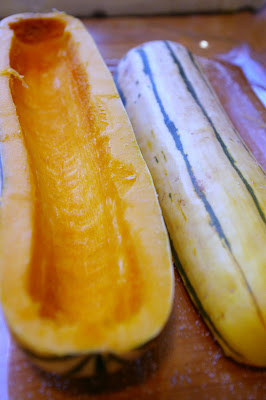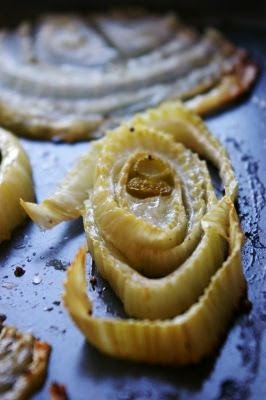On last week's episode of The Splendid Table podcast, actor and writer Michael Tucker spoke of his experience living as an American in Italy. Aside from the obvious challenges adapting to a foreign language and culture, he has learned an entirely different way of cooking since moving to the small town of Umbria. Something he said about cooking really struck me: he said that his cooking trajectory has been much like a bell curve. As he learned more about food and cooking and discovered his love for all things culinary, he acquainted himself with new, often obscure ingredients. He bought many a kitchen gadget. Basically, his cooking became more and more complicated. But being in Italy changed that. In Italy, Tucker and his wife eat mostly at home and in family-owned restaurants, where food is composed entirely of local, fresh ingredients, preparations are dead simple, and nothing is more delicious. He's learned to focus less on how many ingredients go into a dish or how labor intensive the process is, and focus instead on using few but quality ingredients and precise but simple methods. The locals of Umbria, he says, consider these "rules" of good cooking nothing less than homage to long-time traditions.
I'm trying to go with the simple theme these days. It may not be evident from some of the recipes I've posted lately, which I admit are often more intricate and work-intensive than I intend. But I do usually find that simple is best; it allows me to have maximum control over what I put into my food and what it looks like when I serve it.
This was one of the dishes we served on Sunday. As I was rummaging through my vegetable drawer to make Ina Garten's vegetable torte, I saw four cute baby yellow squash from last week's CSA that I'd totally forgotten about. Never sure about how much food it takes to feed an army of guests, I figured I might as well use what I had. This squash antipasto is super quick to throw together, and as you can see, it looks really pretty.
Yellow Squash with Basil and Pine Nuts
four small yellow squash
good olive oil
good balsamic vinegar*
sea salt and freshly ground pepper
a handful of pine nuts
a few sprigs of fresh basil
1. Preheat oven to 350 degrees.
2. Slice squash lengthwise into 1/4-inch slices.
3. Spread squash in a single layer on a non-stick or sprayed baking sheet. Drizzle with olive oil, and sprinkle salt and pepper overtop.
4. Roast squash for about 20 minutes, until soft and golden but not burnt.
5. Fan out squash decoratively on a small plate. Top with pine nuts and basil, another drizzle of olive oil, and several spoonfuls or balsamic vinegar.
Serve warm or at room temperature.
*a note about balsamic vinegar: I don't have the real stuff, which can cost 50 bucks for a teeny little bottle. Instead, I buy good regular balsamic from the grocery store, several bottles at a time, and then reduce it to about a third of its original volume. Real balsamic has a syrupy texture that's much less liquidy than what's sold here in grocery stores, and a balsamic reduction like the one described here mimics that thickness well. Danielle from Habeas Brulee will be the first to warn you, though -- when you do this, it makes your whole house smoky and vinegar-smelling, so do it when you're home alone!

